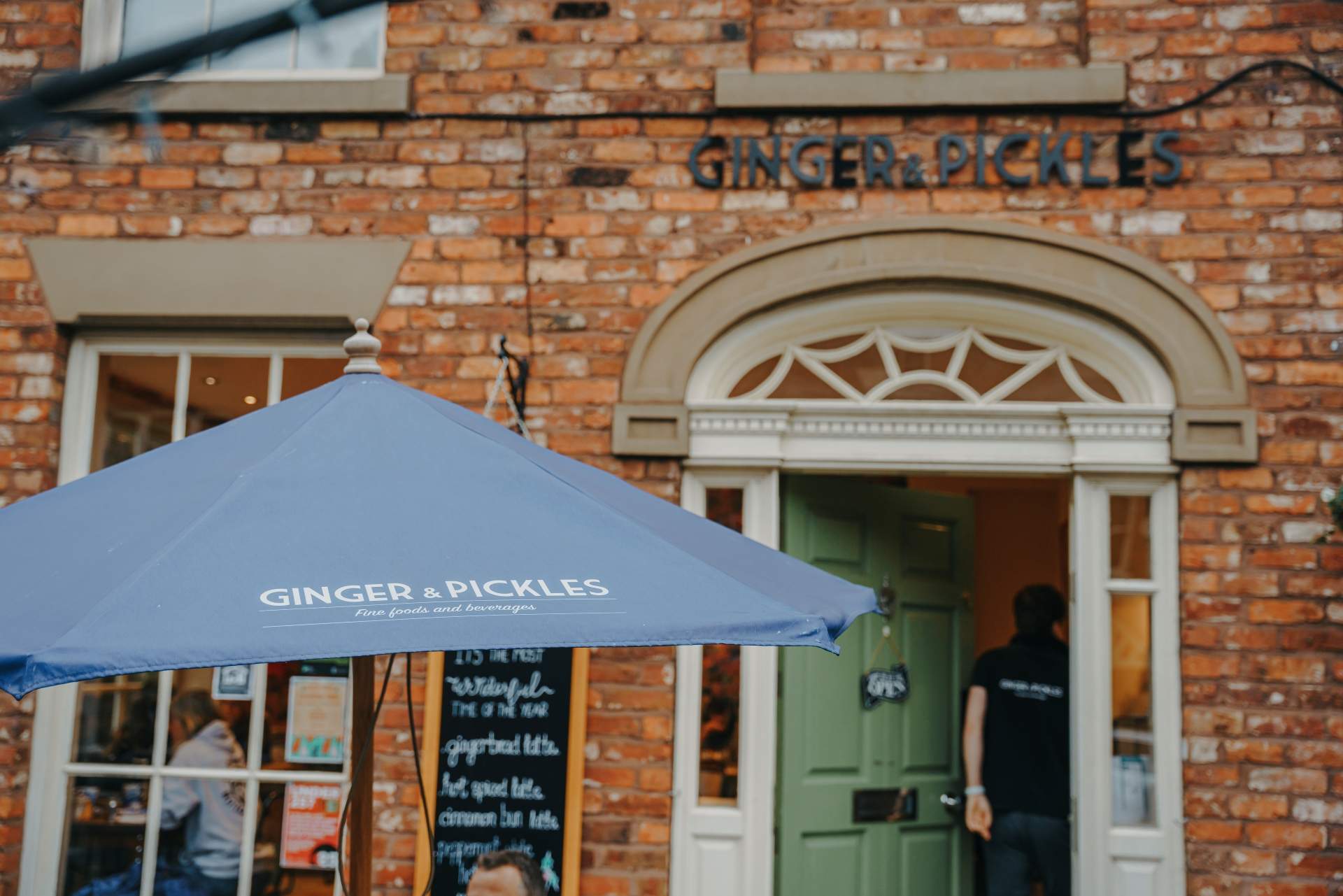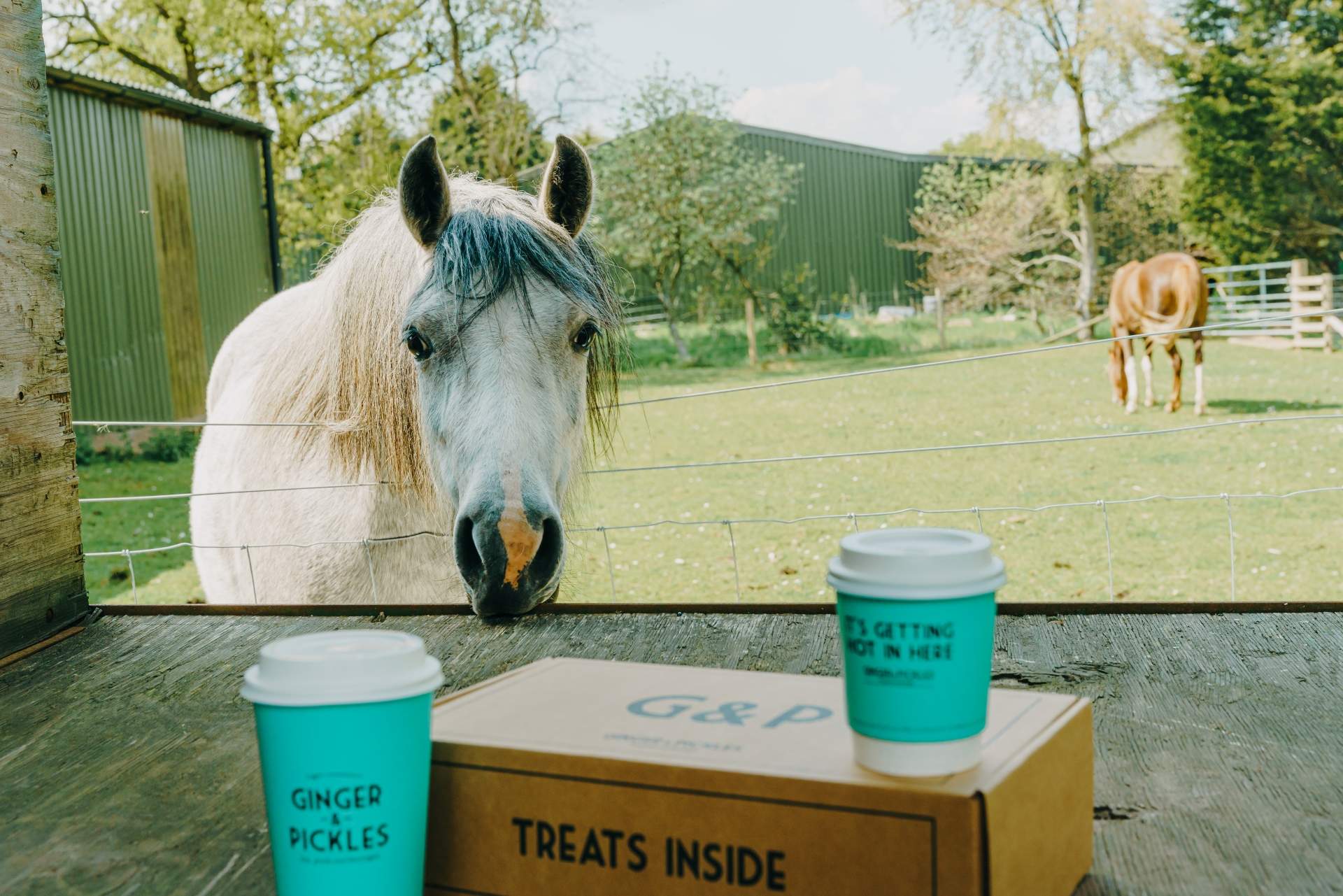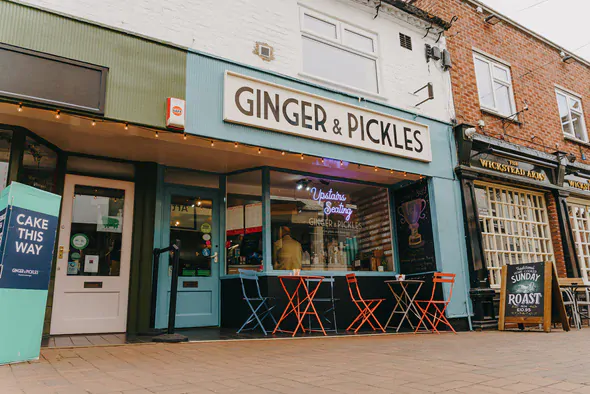Tarporley Tearoom, which is located in a quaint village just south of Cheshire, is one of the four restaurants that make up Ginger and Pickles, a family-run business overseen by Harry. There’s also a bakery and online shop for good measure.
Harry Picken sits in Tarporley Tearoom, leaning back casually to reflect on all that running a restaurant entails. “A lot goes into a successful restaurant. A lot.”
With a handful of thriving locations already up and running, talking legal and operational compliance, as well as funding and location spotting, all comes naturally to Harry. But it’s not without its challenges.

Choosing a business structure
Being a sole trader worked in the early days of Ginger and Pickles, especially as business operations were fairly straightforward. That soon changed, and Harry says, “As the business grew, the liability grew.”
This is where the need to transition to a limited company became apparent. “With a limited company, it’s limited liability.” It was a change that marked a significant step in mitigating financial risk and structuring the business for future growth.
Harry notes, “The sole trader structure offered simplicity and direct control, ideal for starting small. As Ginger and Pickles blossomed, however, the need for a more robust structure became evident.
“The limited company format provided not just limited liability, protecting personal assets, but also opportunities for easier access to funding and a more professional image.”
Yet, this transition wasn’t without challenges. It demanded a deeper understanding of corporate regulations, more complex accounting requirements and a shift in tax obligations.
Harry navigated these complexities, understanding that the benefits of limited liability and enhanced growth potential were central to the longevity and success of Ginger and Pickles.
Learn more about everything that goes into opening a restaurant

Legalities and complexities
There’s also the licensing aspect to consider. Restaurants require all types of licensing, and it was no different for Ginger and Pickles. “All of our restaurants required an alcohol licence that entailed a comprehensive training process and the acquisition of various certificates,” Harry reflects.
In addition to alcohol licensing, maintaining up-to-date food hygiene certifications and passing health and safety, as well as Food Standards Agency inspections, were integral to the process. These inspections often occur unexpectedly, meaning meticulous record-keeping is required, like monitoring fridge temperatures.
The paperwork and compliance for running a food business were substantial, but as Harry notes, “They were essential components of successfully operating in the industry”.
Equally important was the implementation of health and safety policies, a non-negotiable aspect of restaurant management. Harry adopted a practical approach: “Using checklists is a good way to keep on top of everything.
“Whether putting a sign out for wet floors or keeping the kitchen up to scratch, going through each point one by one puts health and safety top of mind and makes sure all the jobs get done.”
Such a methodical approach means that Ginger and Pickles not only adheres to regulations but also maintains a safe environment for both employees and guests.
Securing funding
Restaurants typically need funding, especially in those early stages when capital might be low. There’s also an evolving market to adapt to – sometimes, a restaurant might need to find finance even after it’s up and running.
For example, when the COVID-19 pandemic struck, Harry tapped into government schemes, notably using the bounce-back loan, which played a fundamental role in sustaining the business during challenging times. “Using the bounce back loan in Covid gave us that additional support we needed at a time when people weren’t allowed to visit restaurants”, Harry notes.
Fortunately, worldwide pandemics don’t occur frequently. But that’s not to say financing won’t be needed at some point if you operate a restaurant. When it comes to getting accepted for loans, regardless of the reason, Harry points out that restaurant owners need to consider several factors.
“In the initial stages, personal assurances were often required, especially as a sole trader. At the very beginning, if you’re a sole trader, then it is all personal reassurance,” he explains. “This could mean tying significant personal assets, like a house, to the business’s fortunes.”
As Ginger and Pickles grew, the focus shifted towards the business’s financial health. Harry emphasises, saying, “Your accounts need to have accurate accounting, and using software like Xero helped us maintain transparent and efficient financial records. These were necessary for securing loans and managing finances.”
Harry also cautions against quick, high-interest financial solutions often offered by payment providers and software platforms. These options, while tempting, can lead to unfavourable financial commitments.
“It’s often very tempting to go for cheap finance, but in most cases, you end up paying back more overall. If you’re in this for the long run, quick fixes should try and be avoided”, he concludes.
Writing a business plan
Crafting a watertight business plan laid the foundation for Ginger and Pickles. Harry emphasises, “Make the business plan not just for the banks but for yourself because it should be your plan at the end of the day.
“Make it your roadmap to success.” This approach underscores the importance of a plan that isn’t only financial but also strategic in its nature.
Harry highlights the need to include fine details that attract and retain customers and the significance of identifying market gaps. Understanding the unique selling proposition of Ginger and Pickles was central to assessing whether the market was already saturated or if there was a need for what Harry and his family offered.
This kind of analysis included a SWOT (Strengths, Weaknesses, Opportunities, Threats) analysis, a comprehensive view of both internal and external factors affecting the business. Additionally, the incorporation of the seven P’s of marketing into the business plan was vital for a well-rounded strategy that addressed all facets of the business operation.

What’s in a location?
In finding the perfect location for Ginger and Pickles, Harry adopted a strategic yet flexible approach. Reflecting on his first location in Nantwich, Harry notes, “That one was probably jeopardised slightly because we had to kind of sacrifice a bit of rent for you know, what do they say? Location location location.”
Despite the challenges of being just off the town centre, Harry leveraged the strength of his brand to draw customers. He agrees that you shouldn’t rush into decisions about location: “Don’t rush into it. If something comes up, really think if it’s right for you and if you can make it work.”
This philosophy further underlines the importance of aligning location choices with the overall business plan and understanding the market dynamics.
Practical considerations, like electricity and Wi-Fi, were also critical. “Electricity is a big one to check because restaurants consume a lot of power,” Harry stated, highlighting the operational needs of a restaurant. This attention to detail ensured that each location met guests’ expectations and was also viable for the long term.
Running a restaurant
Understanding the three key concepts of opening a restaurant – legalities, funding and location – will put any owner on the right track. For Harry, it hasn’t been without its challenges. But careful planning, not rushing into decisions and doing his due diligence has meant that Ginger and Pickles has thrived, becoming a staple of the community in Cheshire.




